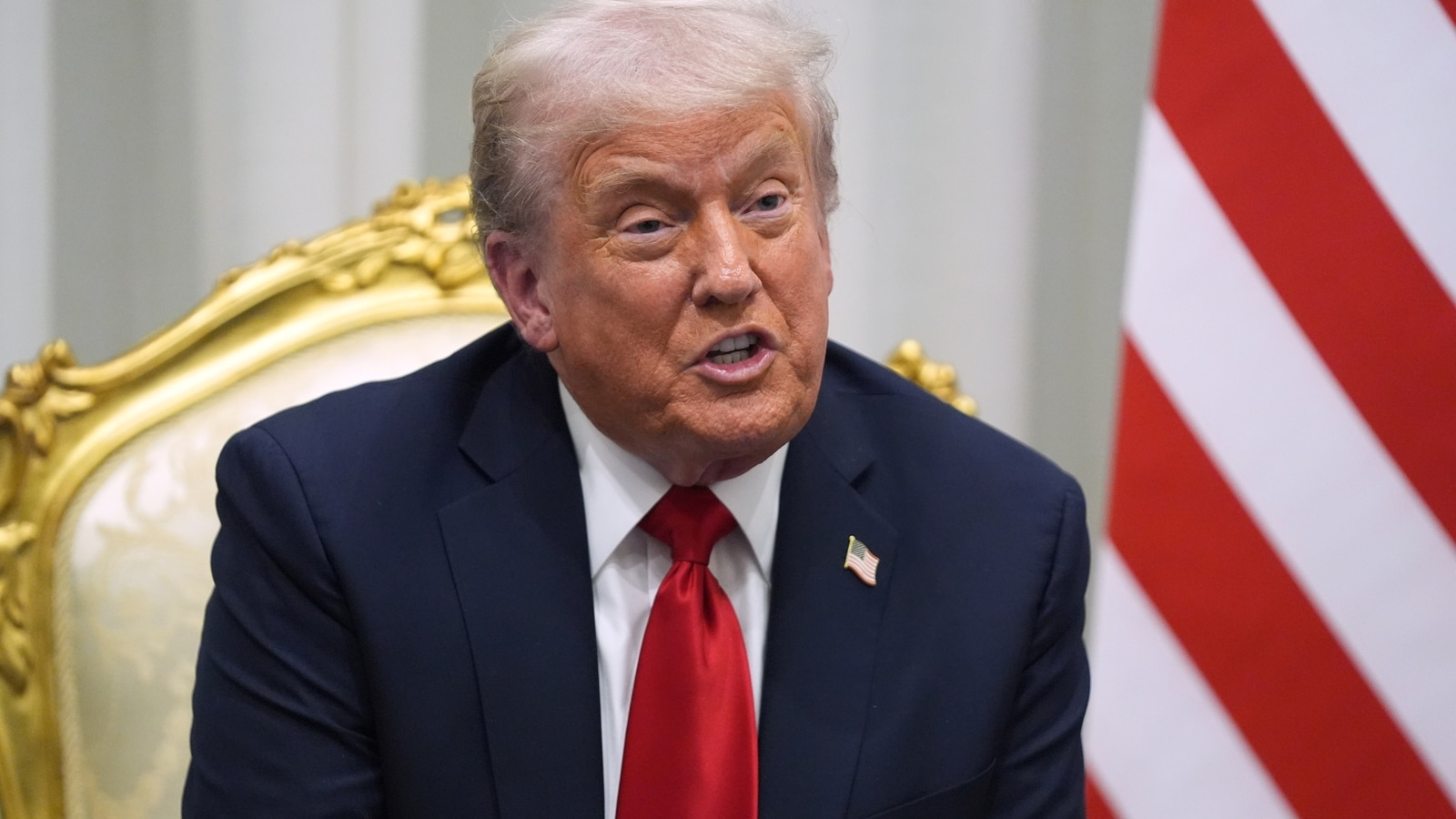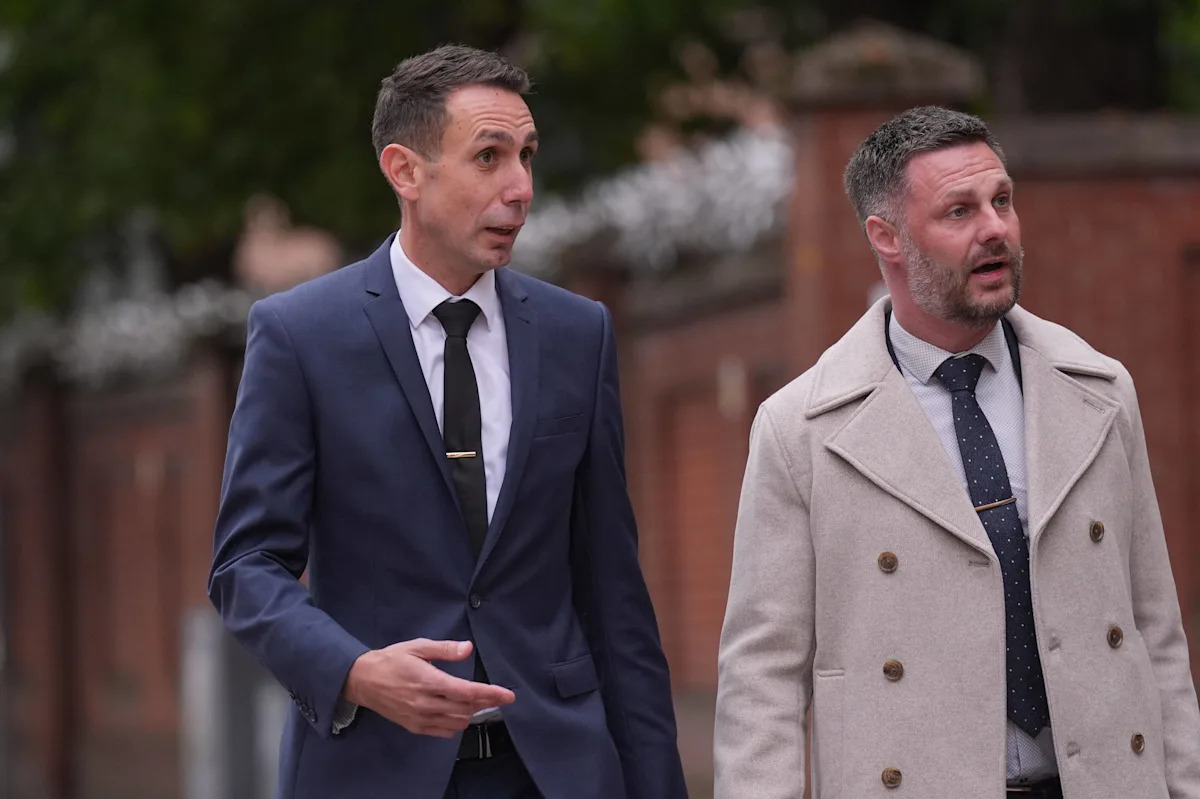FOR TWO decades Roosevelt Roads, a sprawling American naval base in Puerto Rico, stood abandoned. Now the roar of fighter jets and whirring of helicopters have returned to fill the humid air. Over the past month air-force personnel have laboured to restore the airstrip’s control tower and decrepit infrastructure, while hulking cargo planes ferry in crateloads of supplies and equipment.
America is reviving the base as a staging ground for its expanding war against Latin America’s drug gangs. Since August it has surged assets to the Caribbean (see chart). A naval flotilla now sits off the coast of Venezuela, boasting three destroyers, a guided-missile cruiser, an attack submarine and amphibious assault ships. F-35 fighter jets, MQ-9 Reaper drones and a handful of advanced spy planes have also deployed to nearby air bases. Drone strikes have blasted away four speedboats in the southern Caribbean and killed 21 people so far. American officials allege they were “narco-terrorists” from Venezuela.

The display of force is emblematic of America’s new war on drugs. Since returning to office in January, Donald Trump has vowed to smash the region’s cartels and drug traffickers. Once considered a mere matter of law enforcement, the government is throwing the heft of its armed forces into the fight and riding roughshod over the laws of war. “The cartels are waging war in America,” the president told Congress in March. “And it’s time for America to wage war on the cartels.”
In recent years America’s armed forces and intelligence agencies have prioritised fighting a war against China or Russia. Now they are being asked to focus on threats closer to home. An assessment published in March by America’s 18 intelligence agencies elevated the threat of cartels over that of jihadists. Reports suggest that the Pentagon’s forthcoming National Defence Strategy may prioritise “homeland defence” missions like counter-narcotics, above threats like China. “The government is finally using all the tools of national power to go after our greatest threat,” says Derek Maltz, who served as head of the DEA from January until May. “The handcuffs are off.”
This is not the first time America has adopted a muscular approach to the region’s drug traffickers. President George H.W. Bush deployed thousands of troops to invade Panama in 1989 and arrest Manuel Noriega, the country’s president, who had been indicted on drug-trafficking charges. Throughout the 1990s and early 2000s, America supported Colombian efforts to eradicate coca, by providing signals intelligence and offering ride-alongs in its blackhawk helicopters. A recent investigation by Reuters, a news agency, found that the Central Intelligence Agency (CIA) has for years helped run covert operations with Mexican military units to hunt down high-ranking cartel members.
But Trump officials believe America has gone soft in recent years. They point to uncontrolled illegal immigration and record overdose deaths during the Biden administration as evidence of the cartels running riot. Drug gangs are extremely unpopular in America, not least because more than 80,000 of its citizens died of overdoses last year. Polls show that about half of Americans would support military action against the cartels in Mexico. Mr Trump has characterised his fight against the cartels as a moral imperative. “They’re the enemies of all humanity,” he told the United Nations in September.
The administration’s plan to go after them seems inspired by the global war on terror, when America hunted and destroyed jihadist groups across the Middle East. On the first day of his new term, Mr Trump signed an executive order branding cartels as “foreign terrorist organisations” (FTO) and called for their “total elimination”. “We’ve built a finely tuned machine since 9/11 to find, fix and finish terrorist targets,” Michael Ellis, the deputy director of the CIA, explained on a recent podcast. “Now we’re turning it to the cartels—it might mean the Arabic speakers need to learn Spanish.”
There is appetite for this within parts of the armed forces. “Many in the Department of War are absolutely vying to take this fight to the cartels,” enthuses a recently retired special-operations commander. A former Pentagon official, who worked on counter-narcotics under Joe Biden, notes that a faction of officers who made rank during the era of counter-terrorism “have convinced themselves that the war on drugs is a similar fight”. The next stages depend on whether American strikes stay limited to picking off boats in international waters, or move to juicer targets deep inside Latin American soil. The Pentagon is reportedly drawing up strike options on potential targets, such as drug labs and gang leaders, inside Venezuela.
The president mused more than once during his first term about firing missiles at Mexican cartels’ drug labs. Supporters argue that strikes on cartel leadership, drug labs or depots could interrupt the flow of drugs over the border.
For now, however, the Trump administration has taken a less bombastic approach to Mexico, the main source of the drug threat facing America. Mr Trump has pressed President Claudia Sheinbaum to both step up action against the drug gangs, and to break collusion between officials and narcos. Mr Trump can claim a win: Mexico is seizing more fentanyl its side of the border, while seizures at the border have edged down. Bilateral co-operation is often tense, but joint intelligence gathering—including from America operating more surveillance drones over Mexican territory, with Mexico’s permission—are helping map financial and logistics networks. A string of arrests have netted mid-level gang members. Mexico’s dispatch of 55 alleged cartel operators to America could yield further intelligence. Ms Sheinbaum is, broadly, a willing partner.
Focusing on Mexico makes sense. America’s deadliest drug problem is not cocaine but fentanyl, which kills tens of thousands of its citizens each year. Almost all of it is synthesised in Mexico and trafficked up north over land. Blowing up boats in the southern part of the Caribbean may create viral images, but it does nothing to reduce opioid overdoses. And anyway, over three-quarters of Latin America’s cocaine is actually shipped through the Pacific, and most of it is made in places like Colombia, Peru and Bolivia.
Eliminating low-level drug mules may also be tactically unhelpful. During its counter-terrorism wars, America often resorted to killing al-Qaeda and IS operatives when local governments would not, or could not, arrest and prosecute them. Cartel-busting is different. It is better to capture traffickers and then question or recruit them in order to prosecute their bosses. Killing them destroys a valuable source of information.
America’s chosen hardware seems unsuited to the task of drug interdiction, too. Using Reapers and pricey Hellfire missiles and destroyers to blast drug boats is like “trying to cook an egg with a blowtorch”, says James Storey, a former American ambassador to Venezuela. The logistical cost of maintaining the navy’s flotilla in the Caribbean, which currently runs at about $7m per day, will only rise. The use of strategic surveillance assets like U-2 spy planes and RC-135 Rivet Joints never proved particularly effective in tracking down drug labs or leaders where it was tried before, admits an official familiar with past operations.
A show of military force may temporarily deter smugglers, but narcos will adapt. Many are already using stealthier delivery methods, like unmanned submarines, and stashing drugs on container ships. Even strikes on land targets may fail to deliver a decisive blow. The cartels would likely hunker down, dispersing and concealing more of their facilities in cities. In fact they could literally go underground: drug gangs have extensive experience digging tunnels. That blunts America’s preferred way of war, which relies on whacking targets from the air.The war on drugs requires the consent of allies. And that is pretty easy to blow up with a missile.


